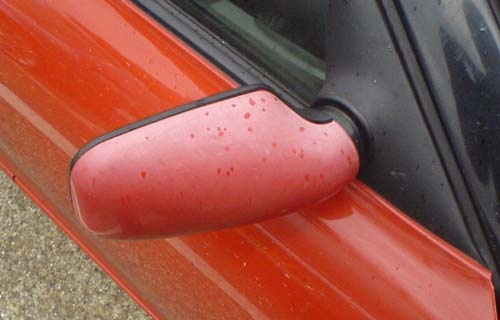Do you have faded paint, oxidized or simply dull old paint on your vehicle? Do you want to protect your vehicle from rust and corrosion from salt on the road or in the air? Your car’s appearance means not only having personal satisfaction from driving a clean and shiny automobile, it also means greater re-sale value when you want to sell the automobile.
Vehicle paint systems are a combination of a pigmented color coat (referred to as the base coat) and a clear protective barrier coat, referred to simply as the clear coat. Together, they combine to form a highly aesthetically pleasing, very durable, and relatively easy to maintain surface. To help your understanding, it is useful to explain the working principle of paints. All pigmented paints have four basic ingredient categories. They are binder, solvent, pigment and additive. The binder is the backbone of the paint which gives the paint most of its thermal, mechanical and weathering properties. The pigments can be bluntly seen as colored dirt. They are just extremely finely ground mineral mined from the earth and dispersed into the paint. Additives are modifiers that add all kinds of special effects to paints. For example, ultraviolet absorbers and stabilizers which give the paint increased resistance to sun fading.
However, no matter how well the paint is constructed, it fades gradually over time as a result of exposure to the outside environment. The reasons could vary from surface contamination, environmental factors, stains to oxidation. Here we’ll take four specific examples to address the problem and promote respective protection methods.
1. Sunlight or more definitely the ultra-violet rays. It is the major culprit. It is said that the shine and gloss of a car paint could last for years if your vehicle was professionally washed on a daily basis and kept indoors 90% of the day. The sun’s rays degrade the finish of the paintwork which is designed to protect it. The sun’s heat, absorbed and retained by the vehicle’s metal body, may also cause staining. To avoid damage from the sun, the most direct and easiest way is to park your car in shade and store it in an enclosed garage if it is possible. You can also manage this by applying a car cover with ultraviolet protection, especially if your car is parked for a long time under the sun. Of course, the best protection is the application of a high quality wax every 3 to 4 months since it provides a protection anytime and anywhere.
2. Chemicals in the atmosphere such as salt. This is especially the case if you live near the ocean. If it remains on the surface pf your paintwork, the result will be oxidization which is much more serious. Oxidization can eat away the surface below the paint coat by corrosion and rust. To cope with this trouble, wash your car regularly to remove these chemicals. Always, you can wax your car, which creates a surface that salt cannot stick to.
3. Abrasive cleaners. Car exterior cleaning is welcomed for car paint maintaining. Yet, with wrong solutions and tools, it can result in the car paint color fading. Not every type of cloth is suitable for cleaning. Use the cleaning cloth that comes along with your car. Make sure the cleaning solution you use is specifically manufactured for the purpose of cleaning cars. Consult your owner’s manual for solutions.
4. Pollutants or contaminants. There are a range of contaminants and toxic particles that may float around the atmosphere, which are all the more dangerous and destructive because they are not immediately evident. For example, these pollutants can combine to form sulfuric and nitric acids which, if allowed to remain on your paint surface, can gradually eat your paint away. Car wax to provide a protective coating and wash your car frequently to combat this threat.

Common causes of fading car paint color and the ways try to prevent it
by
Tags:

Leave a Reply